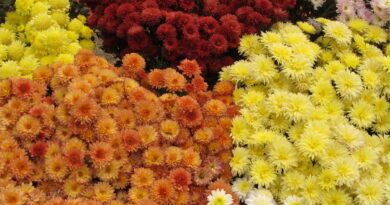Hoya
The Enchanting World of Hoya Flowers: Nature’s Hanging Masterpieces
Introduction
In the verdant corners of tropical jungles and hanging from the canopies of lush forests, a botanical marvel gracefully thrives—the Hoya flower. Also known as the wax plant, Hoya is not just an ordinary flower; it is a masterpiece of nature, captivating the hearts of plant enthusiasts and collectors around the world. With its intriguing foliage, exquisite blooms, and fascinating characteristics, the Hoya flower has earned its place as a cherished gem in the realm of indoor gardening. In this exploration, we will uncover the enchanting world of Hoya flowers, delving into their origins, diverse species, unique features, and the dedicated passion they inspire among plant lovers.
Origins and Botanical Background
Hoya, belonging to the Apocynaceae family, is a diverse genus of tropical and subtropical plants native to Asia, Australia, and the Pacific Islands. The genus was named in honor of Thomas Hoy, an early 19th-century botanist. There are approximately 200 recognized species of Hoya, each with its unique characteristics, making it a delight for plant enthusiasts and collectors seeking diversity in their indoor gardens.
Fascinating Features of Hoya Flowers
What sets Hoya flowers apart are their unique and fascinating features. Most Hoya species are known for their thick, waxy leaves, which serve as natural adaptations to conserve water in their native environments. The foliage varies from species to species, with some showcasing heart-shaped leaves and others displaying intricate patterns and variegations. Hoya flowers, on the other hand, are miniature masterpieces, resembling clusters of stars. They come in an array of colors, including white, pink, red, and purple, and often exude a delightful fragrance, especially in the evening.
Varieties and Cultivation
Hoya flowers come in a variety of species, each with its distinct charm. Some popular varieties include Hoya carnosa, known for its glossy, heart-shaped leaves and fragrant pink or white flowers; Hoya pubicalyx, featuring dark green leaves and stunning clusters of maroon and pink blooms; and Hoya kerrii, affectionately named the “sweetheart plant” due to its heart-shaped leaves. Cultivating Hoyas can be a rewarding experience, although they do require specific care. Providing bright, indirect light, well-draining soil, and occasional watering is essential. Hoyas are epiphytic plants, meaning they naturally grow on other surfaces, making them excellent candidates for hanging baskets or mounted displays.
Symbolism and Cultural Significance
Hoya flowers, like many other plants, have symbolism and cultural significance attached to them. In various cultures, Hoyas are often associated with good luck, happiness, and positive energy. In some traditions, the presence of a blooming Hoya plant in the home is believed to bring prosperity and fortune to the inhabitants. Additionally, in certain Asian cultures, Hoyas are revered for their ability to endure adverse conditions, symbolizing resilience and strength.
Hoya Flowers in Art and Literature
The mesmerizing beauty of Hoya flowers has not escaped the eyes of artists and writers. In art, Hoyas have been depicted in botanical illustrations, capturing their intricate details and delicate charm. In literature, these flowers often find mention in poems and stories, symbolizing love, beauty, and the fleeting nature of life. Their unique appearance and captivating fragrance make them subjects of artistic inspiration, enriching the cultural tapestry of the societies that admire them.
The Fascination of Hoya Enthusiasts
For Hoya enthusiasts, cultivating and collecting different Hoya species is more than just a hobby; it is a passion that borders on obsession. Hoya collectors often seek out rare and exotic varieties, marveling at the diversity within the genus. The allure of discovering a new leaf pattern, a unique bloom, or a fragrant species fuels their enthusiasm. Social media platforms have provided a thriving community for Hoya lovers to share their collections, exchange tips, and celebrate the beauty of these extraordinary plants.
Conclusion: Nature’s Hanging Masterpieces
In the delicate elegance of Hoya flowers, we find a testament to nature’s creativity and artistry. From their intricate foliage to their exquisite blooms, Hoyas enchant us with their beauty and captivate us with their resilience. As they drape gracefully from hanging baskets or climb up trellises, they remind us of the intricate balance of nature and the wonders of biodiversity. Cultivating a Hoya plant is not just a horticultural endeavor; it is a celebration of life, beauty, and the enduring marvels of the natural world. With every bloom, Hoyas whisper tales of tropical jungles and distant lands, inviting us to appreciate the enchanting allure of these hanging masterpieces. As we care for these plants, we become stewards of a natural legacy, ensuring that the beauty of Hoya flowers continues to grace our homes and hearts for generations to come.



